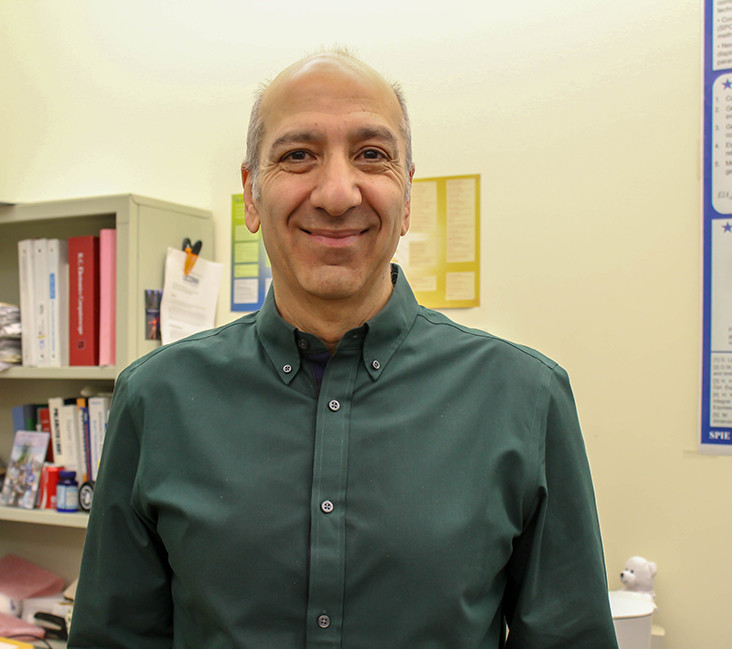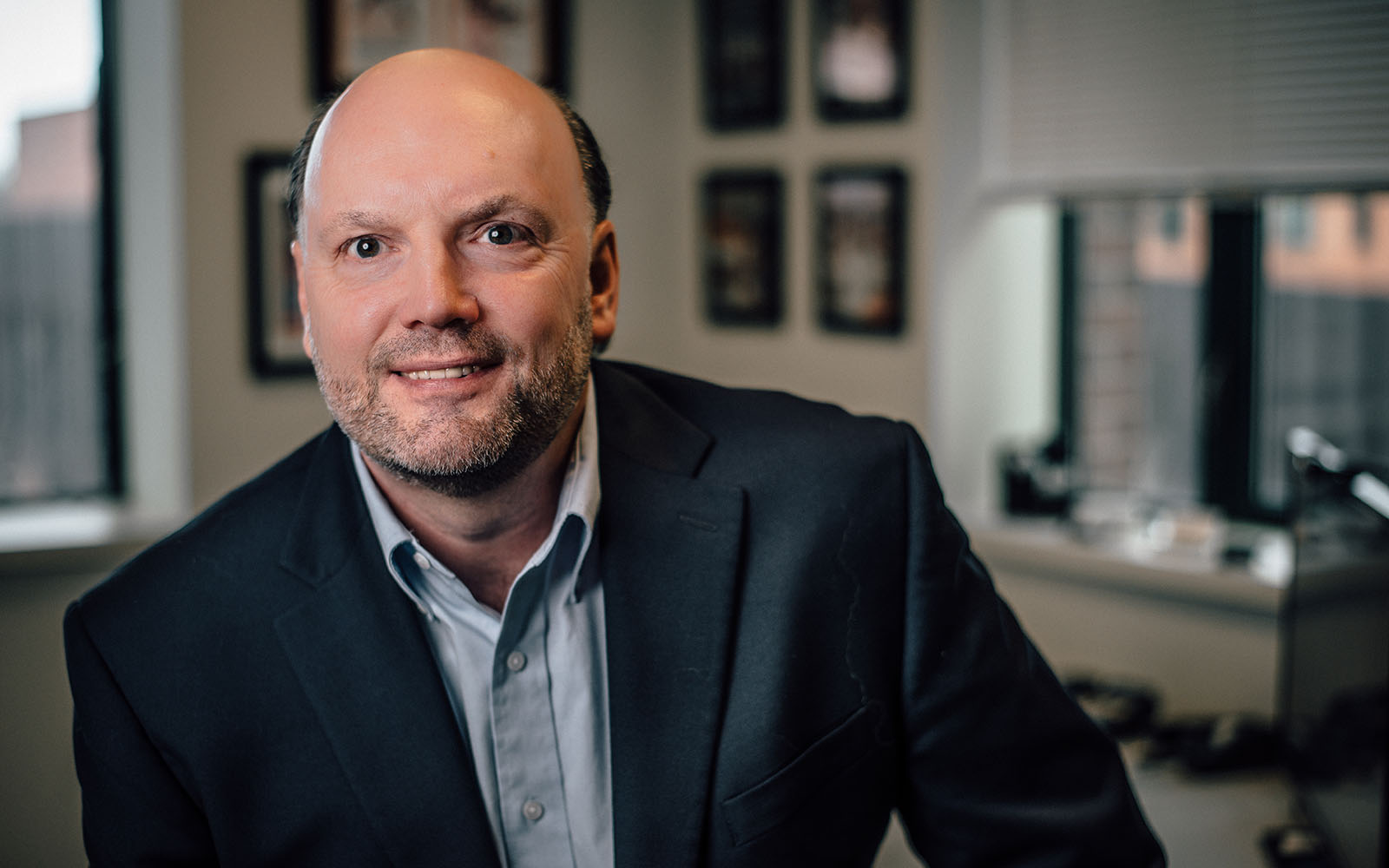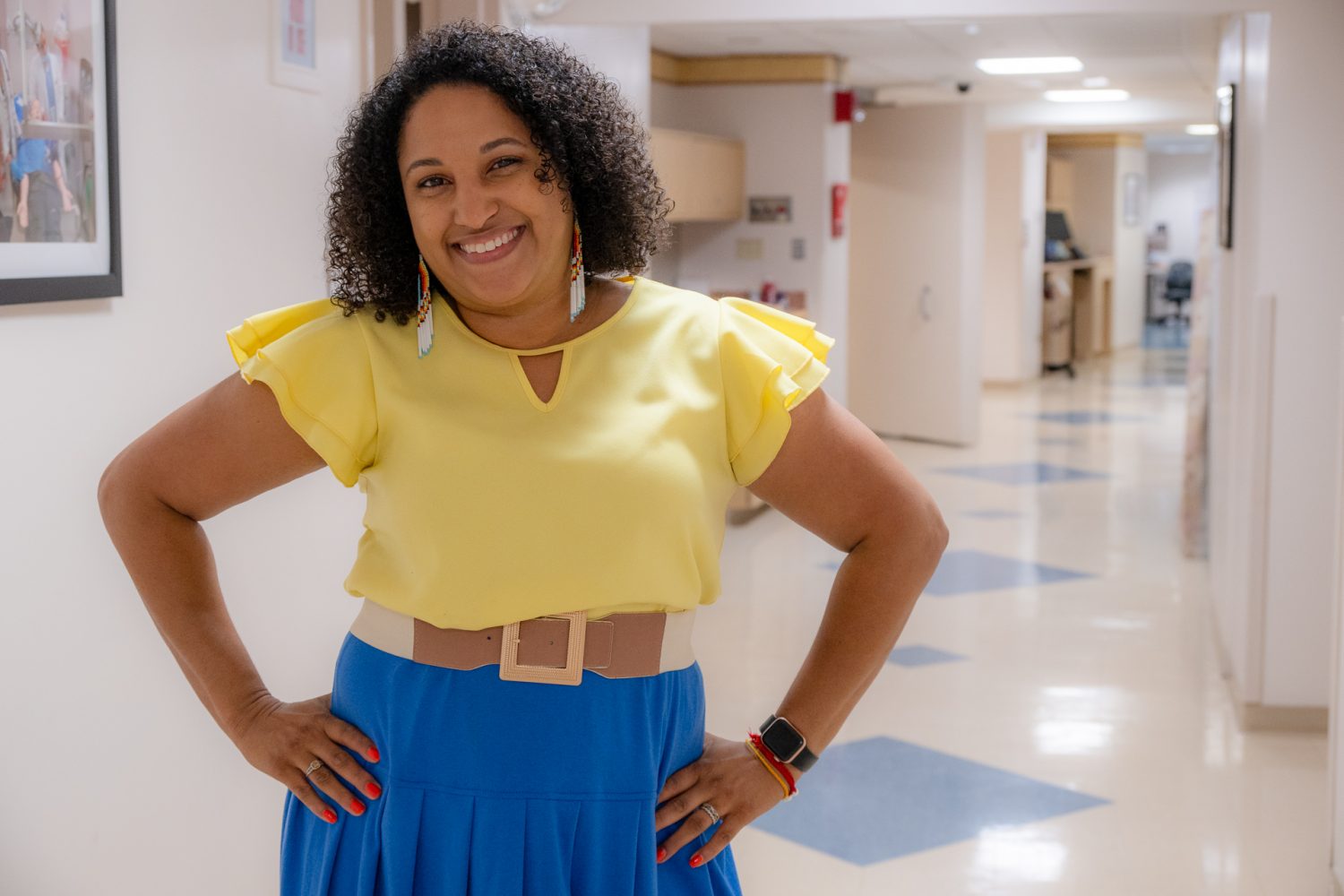Matchbox cars, fish tanks, mini soccer balls — looking around the Multidimensional Optical Sensing & Imaging Systems lab (MOSIS) in UConn’s School of Engineering, you might think you’re in a toy store. But the cutting-edge research conducted by Bahram Javidi, PhD, and his crew of student researchers is anything but child’s play.
With these everyday items as props, Javidi and his team integrate optics, photonics, and computational algorithms and systems to advance the science and engineering of imaging from nano to macro scales. The research conducted in the MOSIS lab seeks to find solutions for challenges faced in defense, manufacturing, cybersecurity and authentication, and healthcare.
“As researchers, we are rewarded for what is novel, what is innovative,” says Javidi. “Proposals, papers, presentations, it’s all based around the need to invent and a culture of newness. My lab is a representation of that mission.”
Javidi, Board of Trustees Distinguished Professor in Electrical and Computer Engineering, is one of the University’s most active researchers, with projects sponsored by nationally competitive agencies and companies. These projects include corporate sponsored research from global industry leaders like Nikon, Lockheed Martin, Samsung, Hamamatsu Photonics, and Honeywell, as well as federal sponsors such as the Air Force, Army, the Office of Naval Research, DARPA, the National Science Foundation, and the Department of Education.
While his skills and area of expertise could have easily translated to a job in industry, Javidi explains that a desire for scientific freedom led him to seek a career in academia.
“As a faculty member, I have the opportunity to determine the course of my own research. I can collaborate freely with global partners and work with people who have strengths that complement mine,” says Javidi. “It’s not just about an international experience. This collaboration with scientists around the globe is what keeps the research vibrant.”
Both his preeminence in his field and this desire to collaborate have made Javidi’s MOSIS lab a destination for motivated visiting professors, postdoctoral fellows, and graduate and undergraduate student researchers.
“In addition to enhancing research in UConn’s Department of Electrical and Computer Engineering (ECE), Bahram’s work supports interdisciplinary programs in biomedical engineering, physics, biology, and statistics,” says ECE department head, Rajeev Bansal, PhD. “Bahram is also a strong believer in international scientific exchange and collaboration. He has co-authored scientific publications with over 150 different scientists and engineers from around the globe, many of whom he has supervised and mentored. This has brought national and international visibility to UConn and our highly ranked electrical and computer engineering program.”
For Javidi, mentoring the next generation of industry and academic innovators is all in a day’s work. While there is no doubt he is deeply invested in his students’ growth, he admits that working in his lab is tough — despite all the toys.
“After they graduate, my students will end up everywhere. A degree in electrical engineering can open a lot of doors. Some become professors, others work in industry, some take the leap and become entrepreneurs, but all of them will have had good academic training and the hands-on experience they need to help them become successful.”
One of the hands-on experiences currently occupying a lot of the MOSIS researchers’ energy is portable holographic field microscope technology featured in a paper published by Applied Optics. The device uses the latest in digital camera sensor technology, advanced optical engineering, computational algorithms, and statistical analysis to provide rapid automated identification of diseased cells.
Once fully developed, the device could provide medical professionals with a fast and reliable new tool for the identification of diseased cells and other biological specimens even when working outside of a traditional clinical setting. One potential field application for the microscope is helping medical workers identify patients with pandemic diseases such as malaria in remote areas of Africa and Asia.
For Javidi, both the scientific and the social impact of the patented technology make this innovation special.
“People performing the tests don’t have to be experts, the parts are inexpensive, and the time it takes to get results for disease identification can be cut from days to minutes,” says Javidi. “This type of advancement could mean early and accurate diagnosis for those who otherwise would have few or no options for clinical care.”
Bahram Javidi received his B.S. degree in electrical engineering from George Washington University, and M.S. & Ph.D. degrees in electrical engineering from the Pennsylvania State University. He has held visiting positions at Massachusetts Institute of Technology, United States Air Force Research Lab, University of Stuttgart, and Thomson-CSF Research Labs in Orsay, France. He has been a consultant to government and industry in the areas of optics, optical systems, image sensors and recognition systems, and 3D optical imaging systems. He has had collaborative research initiatives with numerous universities and industries in the US, Japan, South Korea, China, India, Italy, Germany, Israel, Iran, France, Ireland, Finland, England, Singapore, Egypt, Spain, Switzerland, and Mexico.
He has been recognized for his pioneering work in the field with countless awards and honors, including The Quantum Electronics and Optics Prize for Applied Aspects by the European Physical Society, the George Washington University Distinguished Alumni Scholar Award, the Humboldt Prize for outstanding international scientists from the Alexander von Humboldt Foundation, and the Technology Achievement Award from The International Society for Optics and Photonics. In early 2018, he was named winner of the prestigious Joseph Fraunhofer Award / Robert M. Burley Prize from The Optical Society (OSA).
Per Google Scholar, Javidi has nearly 39,000 citations with an h-index of 92 and i10-index of 632. He holds 30 patents and has over 1,000 publications.



